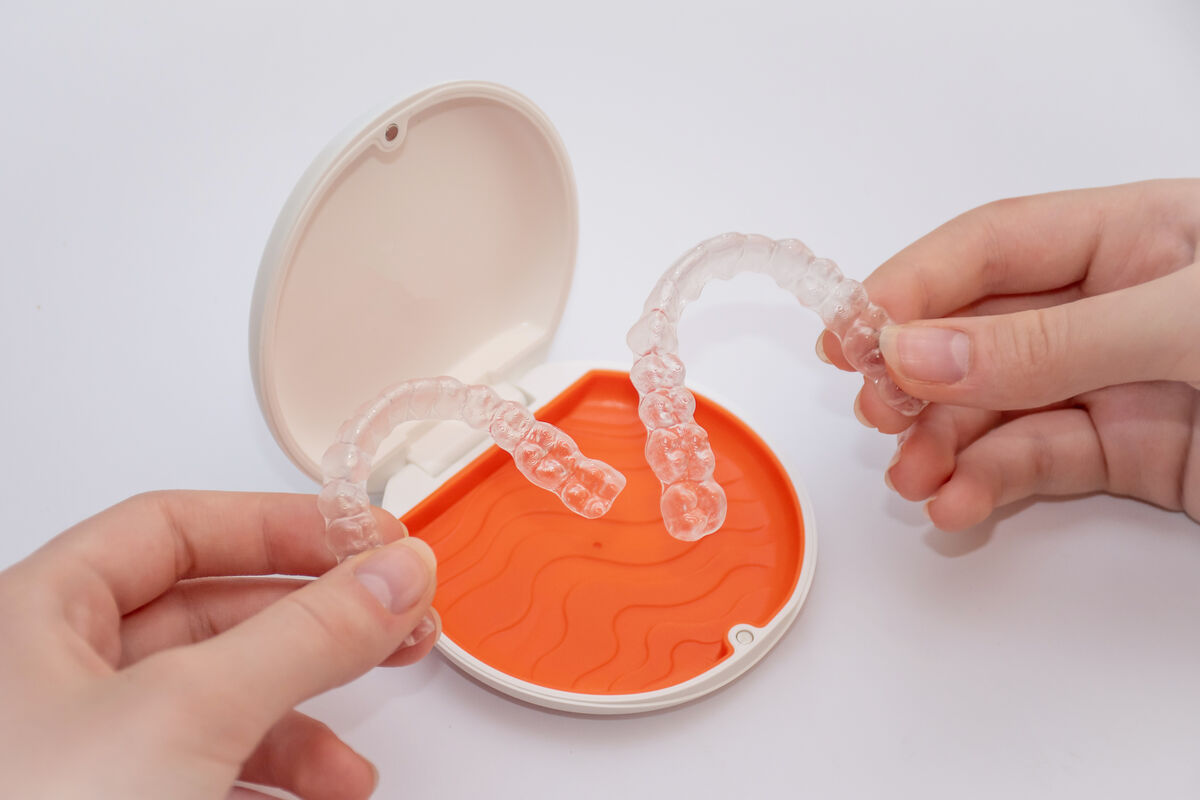Invisalign Retainers: A Guide to Protecting Your NYC Smile
Congratulations, you've finished your last Invisalign aligner and your teeth are perfectly straight! You've invested in your smile, and now begins the most crucial phase for protecting that investment: retention. This is the key to ensuring your results last for a lifetime.
Why Are Retainers Mandatory After Invisalign?
After active treatment, your teeth are in their new positions, but the surrounding periodontal ligaments and bone are not yet stable. These tissues are elastic and have a "memory," creating a strong tendency for teeth to shift back towards their original positions—a process called orthodontic relapse.
The retention phase is non-negotiable and serves two critical purposes:
- To Stabilize Your Results by holding the teeth firmly while the bone and ligaments remodel and solidify around them.
- To Prevent Long-Term Relapse and ensure the smile you worked so hard for stays straight for years to come.
The Different Types of Post-Treatment Retainers
Most orthodontists in New York recommend a combination of retainers for maximum security.
Removable Retainers: Vivera® by Invisalign
Vivera is Invisalign's state-of-the-art retainer system. They are clear trays that look like your aligners but are made from a significantly stronger, more durable material (reportedly 30% stronger).
- Advanced Technology: They are created from your final 3D iTero scan, ensuring a perfectly precise and comfortable fit. Your digital scan is saved, so if you lose a retainer, a replacement can be ordered instantly without a new office visit—a huge plus for a busy lifestyle.
- Convenience: They are typically provided in a set of multiple pairs, so you always have a backup. They are removed for eating and brushing.
- Wear Protocol: Your orthodontist will provide a specific schedule, but it generally involves full-time wear for the first few months, transitioning to nightly wear for life.
Fixed Retainers: The Bonded Lingual Wire
This is a very thin, custom-shaped metal wire bonded to the back (lingual side) of your upper and/or lower front teeth.
- How it works: It acts as a permanent safeguard for the teeth most prone to shifting—the "social six" front teeth.
- Advantages: It's completely invisible and works 24/7 without you having to think about it.
- Considerations: It demands meticulous oral hygiene. Using a water flosser or floss threaders is essential to clean around the wire and prevent tartar buildup.
The Ideal Approach: Dual Retention
For the ultimate protection, many top orthodontists recommend a dual retention strategy: a permanent bonded retainer combined with nightly wear of a Vivera retainer. The wire provides constant security for the front teeth, while the Vivera tray protects all the teeth (including molars) from shifting and provides protection against nighttime grinding (bruxism).
FAQ About the Retention Phase
How long do I really need to wear retainers?
The clinical consensus is clear: nightly, for life. Teeth are subject to natural changes and pressures throughout our lives. Lifelong retention is the only way to guarantee your smile remains as perfect as the day your treatment ended.
Can't I just use my last Invisalign aligner as a retainer?
No. Your final aligner is designed for tooth movement and is not strong enough for long-term retention. It will wear out, warp, and will not hold your teeth as effectively as a Vivera retainer, which is made from a much tougher material.
What is the cost of retainers?
The cost of retainers is a separate investment from your main treatment. Think of it as insurance for your smile. Vivera retainers are sold in sets, making the cost per retainer more affordable over the long term.
Conclusion: The Final, Crucial Step to a Lifelong Smile
Retention is not an optional epilogue; it's the essential conclusion to your Invisalign journey. It's the commitment you make to ensure the time and financial investment in your treatment delivers a lifetime of value. By following your orthodontist's retention plan, you secure a beautiful, stable smile you can be proud of forever.
Ready to Start or Protect Your Invisalign Journey in NYC?
Use our interactive map to find a certified orthodontist in your neighborhood for a consultation.
Find a Provider in NYC
